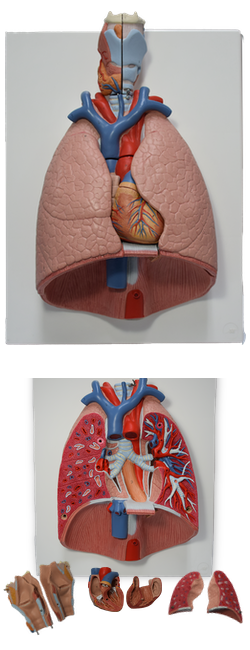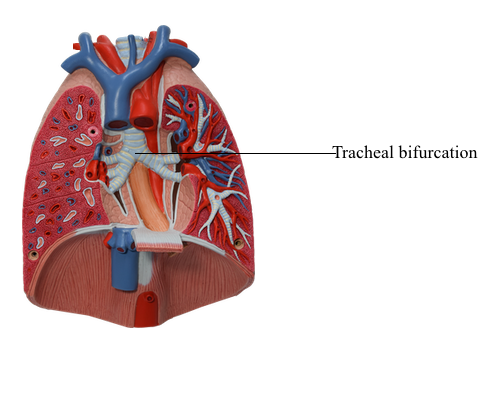Main Model

C TRACHEA : 1 Tracheal bifurcation

Tracheobronchial Tree
Beginning at the larynx, the walls of the airway are supported by horseshoe- or C-shaped rings of hyaline cartilage.
The sub-laryngeal airway constitutes the tracheobronchial
tree. The trachea, located within the superior mediastinum, constitutes the trunk of the tree. It bifurcates at the
level of the transverse thoracic plane (or sternal angle) into
main bronchi, one to each lung, passing inferolaterally to
enter the lungs at the hila (singular = hilum).
• The right main bronchus is wider, shorter, and runs
more vertically than the left main bronchus as it passes
directly to the hilum of the lung.
• The left main bronchus passes inferolaterally, inferior
to the arch of the aorta and anterior to the esophagus and
thoracic aorta, to reach the hilum of the lung.
Trachea
The trachea descends anterior to the esophagus and enters
the superior mediastinum, inclining a little to the right of the median plane. The posterior surface of the trachea is flat where it is applied to the
esophagus. The trachea ends at the level of the
sternal angle by dividing into the right and left main bronchi. The trachea terminates superior to
the level of the heart and is not a component of the posterior
mediastinum.